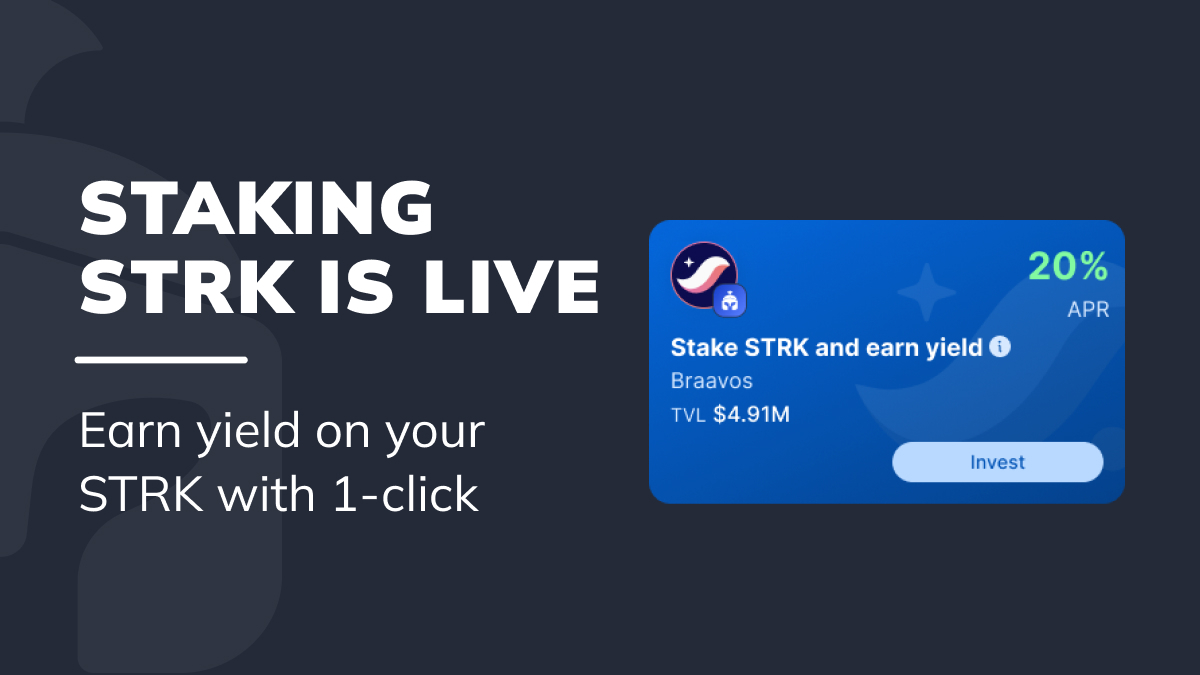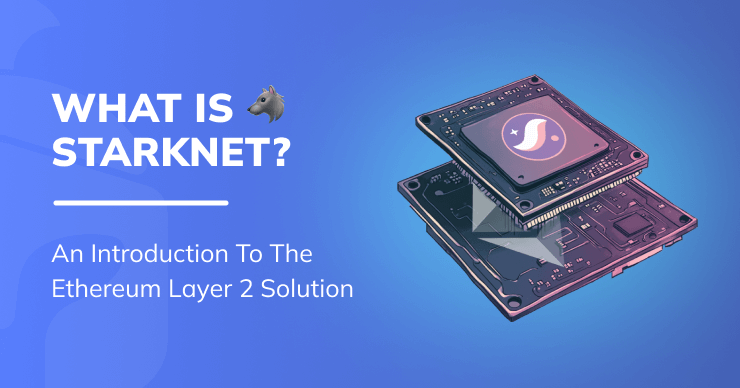Starknet Quantum Leap: All You Need to Know
Starknet just took a big step towards 100TPS. Here's what the Quantum Leap means for crypto, DeFi and you.
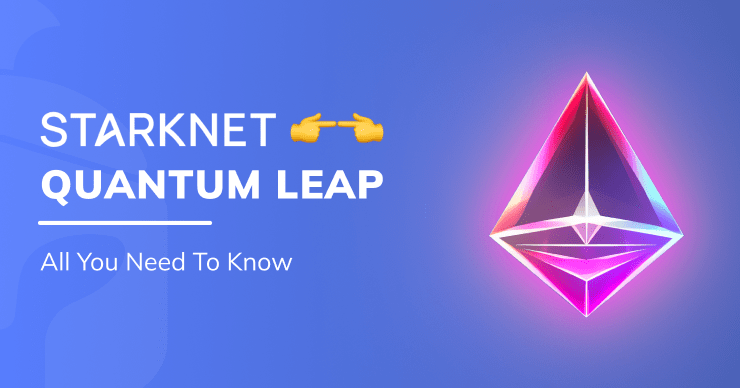
The Starknet Quantum Leap, also known as the v0.12 upgrade, means the network could reach 100 transactions per second (TPS), the best performance in Crypto. It’s like replacing the old dial-up modem with 3G broadband. Whether you trade, invest, farm or buy NFTs, it will provide the user experience you expect from web3.
What is the Starknet quantum leap upgrade?
For background:
- Starknet is designed to solve Ethereum’s congestion issues, but low TPS and slow transaction speeds have limited its ability to do so.
- Starknet’s sequencer, a key part of the overall machine, creates a major speed constraint because of its programming language, which lacks the performance required of a production-grade system.
- In v0.12, Starknet has released a package of upgrades to meet these challenges.
Now that the Starknet token has been launched, you can check this article for a deep dive into the Starknet token.
So how fast was Starknet before the Quantum Leap?
Starknet has been processing around 2 transactions per second on average during its alpha stage. This is slower than many other L2 networks. In fact, it’s even slower than Ethereum itself.

But why couldn’t Starknet process more transactions?
The sequencer, at the heart of the Starknet engine room, has been creating a significant bottleneck.
Like all rollups, Starknet uses a sequencer to process transactions before sending them to the Prover, which batches them up, proves them and sends them to Layer 1 Ethereum for verification. Sequencing the transactions one by one ensures that a user cannot spend the same asset twice (a problem known as double-spending).
The following diagram from StarkWare shows how the sequencer works.
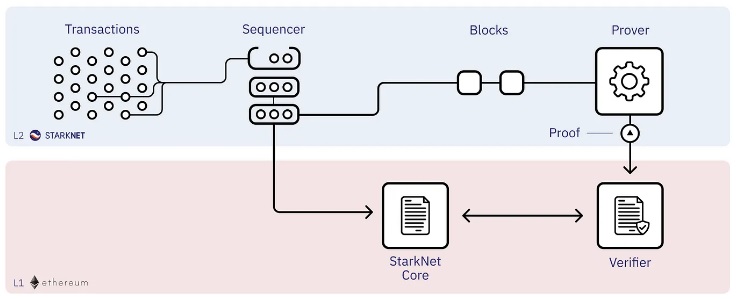
The Starknet sequencer has been written in Python, a programming language that cannot run as quickly as others. Furthermore, the main Cairo bedrock has not always been optimized.
This clogs up transactions and slows their arrival at the prover. StarkWare’s own president, Eli Ben-Sasson, has used the analogy of a car whose air intake pipe is too narrow.
Ok, so how has Starknet addressed this problem?
In the first stage of Quantum Leap, Starknet has created a new version of the sequencer using Rust, a language which has had huge uptake in the crypto community.
Python code has to be interpreted into machine code, has poor memory management and a slow dynamic type system. Rust, on the other hand, is compiled directly, with unique and highly efficient memory management and a strong typing system. This cuts out a lot of the middlemen (something we all love in crypto) while making it faster, and more efficient, than Python.
If you want an analogy, it’s a bit like going from this:

What effect will the upgrade have?
In the first few hours after the Quantum Leap, Starknet TPS showed a potential improvement of around 10x. This backs up the results from the testnet stage, when the v0.12 upgrades increased throughput from an average of 20,000 Cairo steps per second to 220,000, an increase of 11x.
Ultimately, the coming series of upgrades could increase Starknet’s TX throughput by over 50x, and enable the network to handle 100 transactions per second.
Starknet hopes to create an invisible blockchain, where web3 technology operates with the speed and performance of web2. The latest upgrades represent a crucial step on this journey.
That’s great, but how will Starknet’s Quantum Leap actually change my user experience?
You’ll see a number of key benefits on Starknet after the Quantum leap.
- Your swaps and trades will go through much faster, and the funds will arrive much more quickly.
- You will be able to enter and exit yield positions even more quickly.
- Your NFT mints will take place in seconds, rather than minutes.
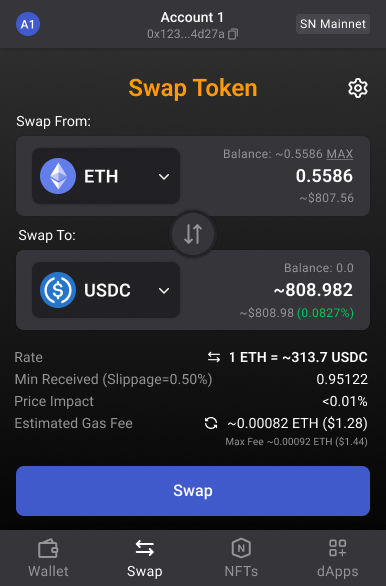
If you want to really understand the impact of the Starknet Quantum Leap for you as a user, we recommend running some transactions on Starknet’s testnet on top of Goerli. Goerli replicates IRL conditions on Starknet, but the currency has no real-world value and it’s free to acquire. So there’s no financial investment required from your side.
You can try Starknet in Goerli using our Braavos wallet. Here are the steps to follow:
- Download Braavos if you haven’t already (it’s a software wallet so will download as an extension on your preferred browser, or mobile OS).
- Go and get some Goerli tokens. We recommend getting them from the Starknet faucet.
- Try some different transactions inside the Braavos wallet. You could try:
- Swapping some tokens inside the wallet.
- Creating a domain name.
- Going to the gallery of dApps and interacting with a specific protocol.
And if you have any questions about Quantum Leap, Starknet or anything else, reach out to us on Twitter or Discord and we’ll be happy to help.

